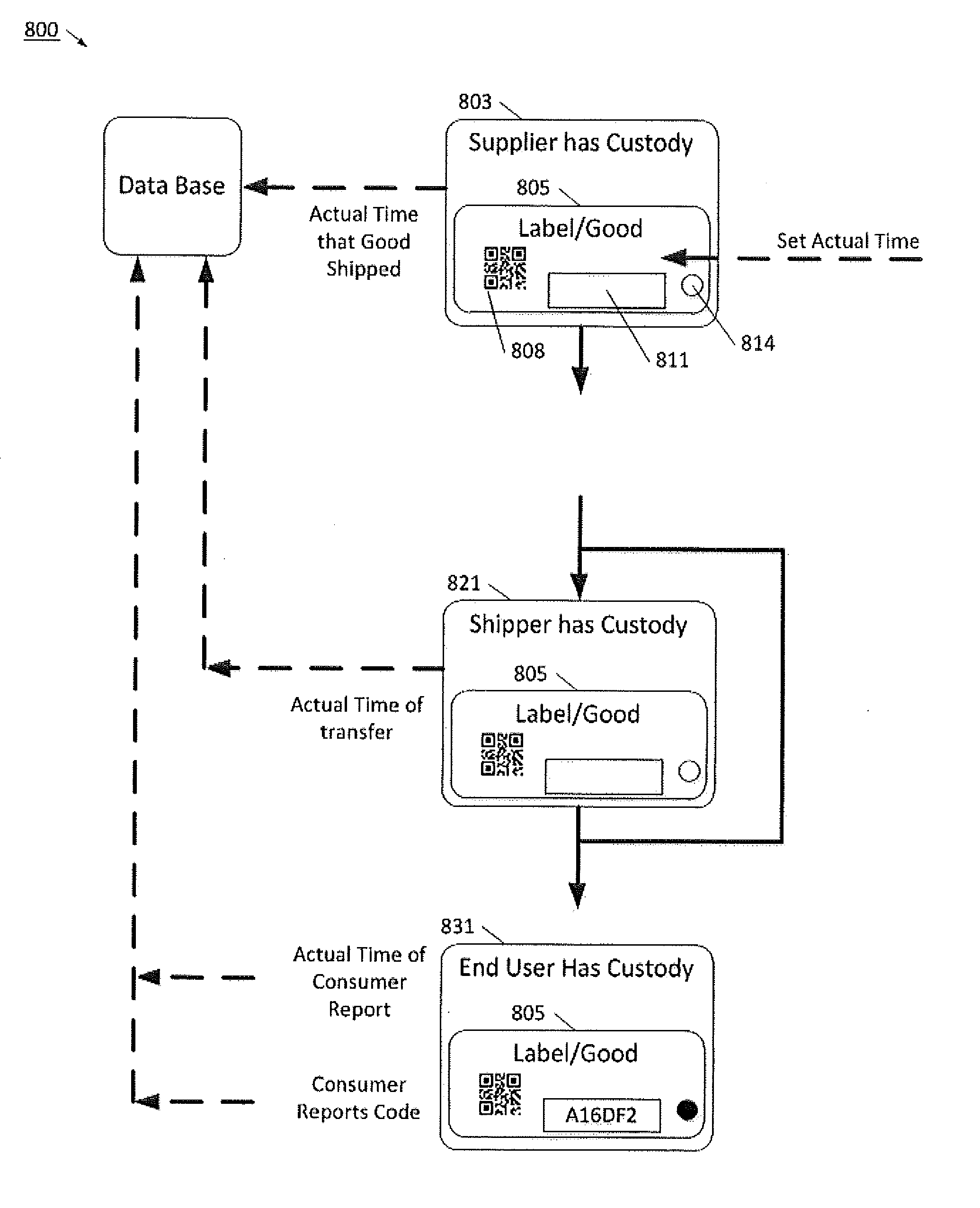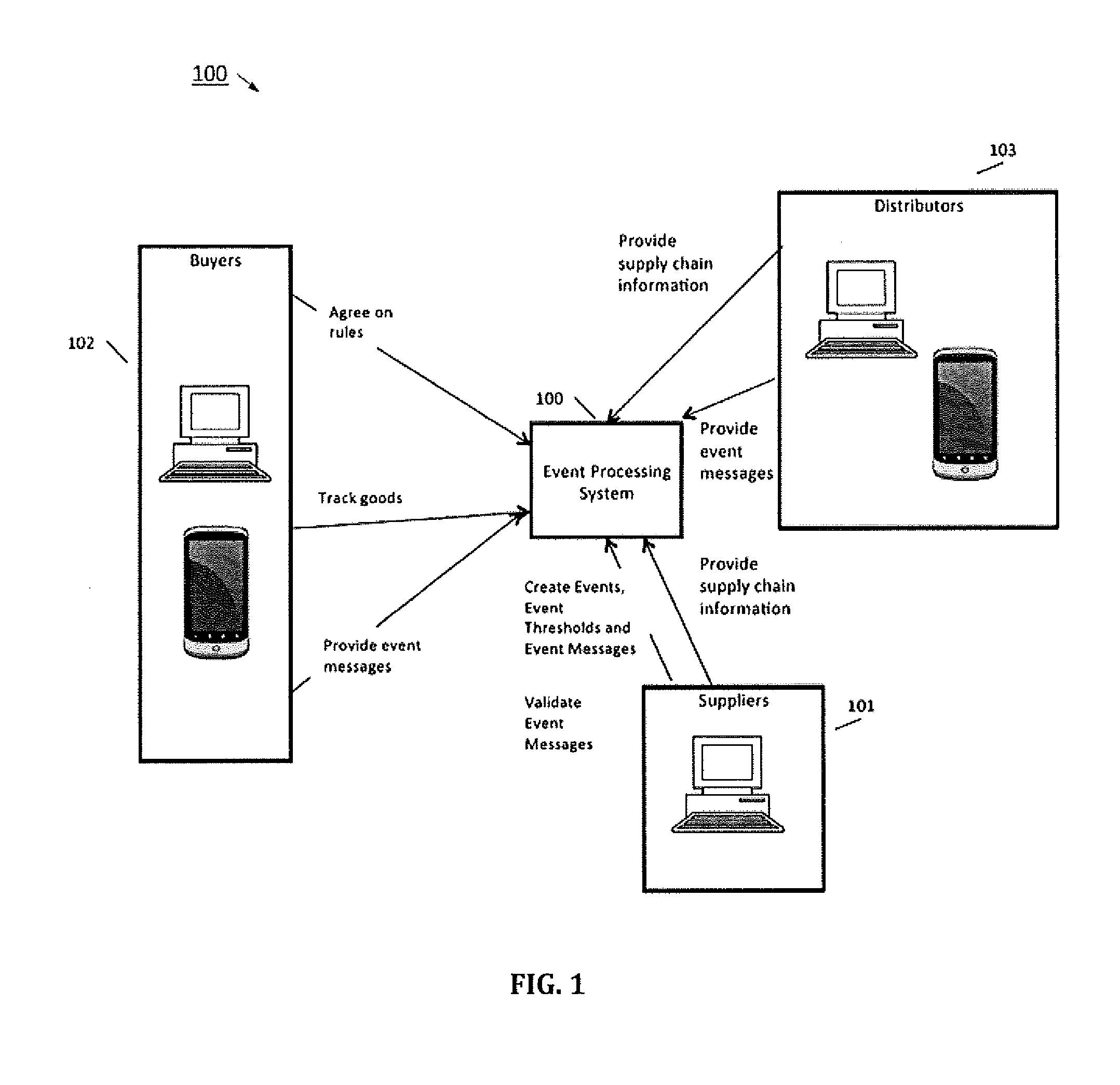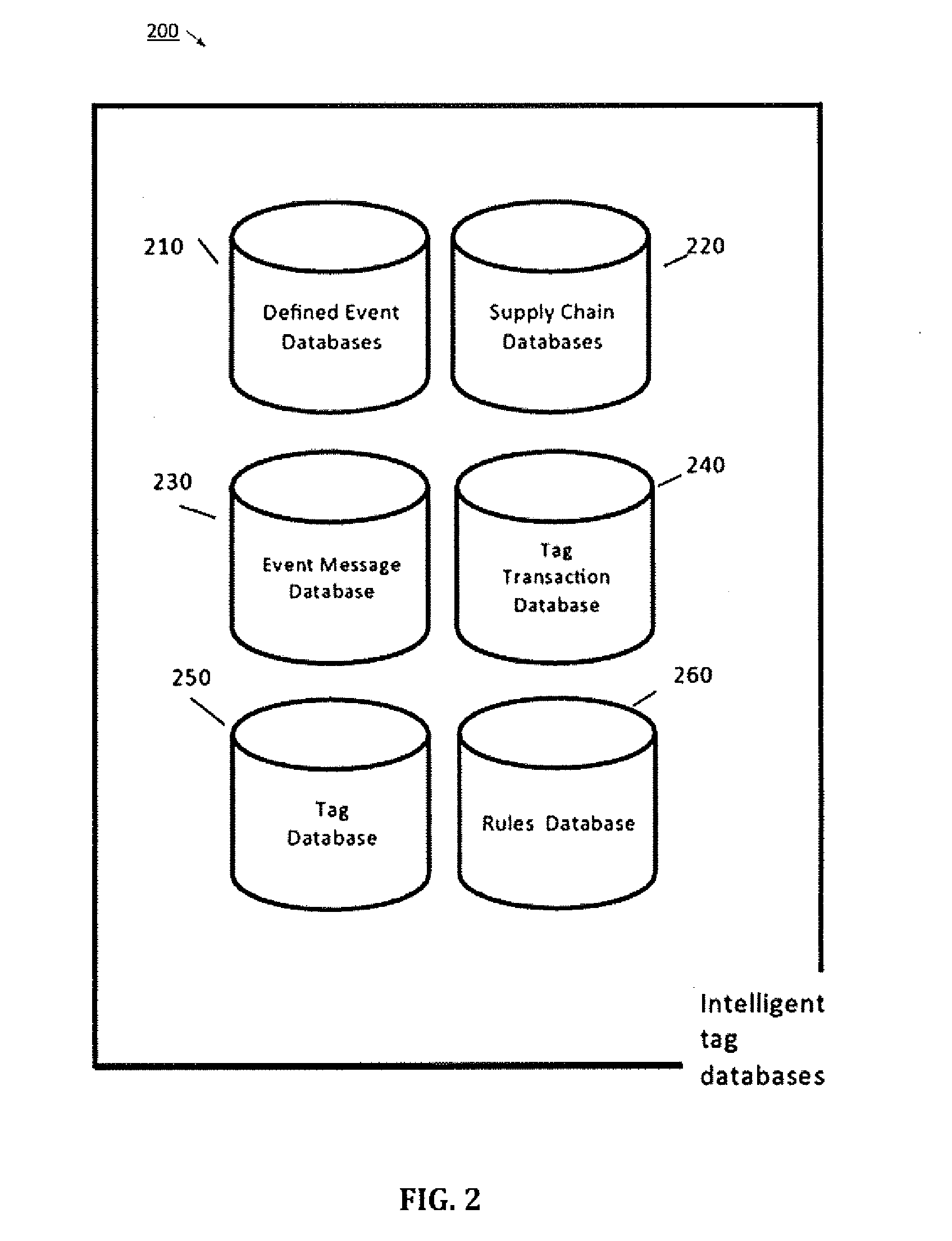Intelligent Label Processing System
a label processing system and intelligent technology, applied in the field of network computer support systems, can solve the problems of slow adoption of such labels, high cost of rfid electronics, and the unlikely, rare, end consumer to be able to interact with labels, etc., and achieve the effect of quick understanding of the condition of goods, quick and easy identification
- Summary
- Abstract
- Description
- Claims
- Application Information
AI Technical Summary
Benefits of technology
Problems solved by technology
Method used
Image
Examples
Embodiment Construction
[0017]The following description of exemplary embodiments of the invention is not intended to limit the scope of the invention to these exemplary embodiments, but rather to enable any person skilled in the art to make and use the invention.
[0018]An intelligent label is associated with a good, and includes one or more permanent and irreversible electrochromic indicators that are used to report the condition of that good at selected times and points in the movement or usage of that good. These electrochromic indicators provide immediate visual information regarding the status or condition of the good without need to interrogate or communicate with the electronics or processor on the intelligent label. In this way, anyone in the shipping or use chain for the good, including the end user consumer, can quickly ascertain the condition or state of the good and related time and environmental data that enables the appropriate parties to act or effect on one or more transactions accordingly.
[0...
PUM
 Login to View More
Login to View More Abstract
Description
Claims
Application Information
 Login to View More
Login to View More - R&D
- Intellectual Property
- Life Sciences
- Materials
- Tech Scout
- Unparalleled Data Quality
- Higher Quality Content
- 60% Fewer Hallucinations
Browse by: Latest US Patents, China's latest patents, Technical Efficacy Thesaurus, Application Domain, Technology Topic, Popular Technical Reports.
© 2025 PatSnap. All rights reserved.Legal|Privacy policy|Modern Slavery Act Transparency Statement|Sitemap|About US| Contact US: help@patsnap.com



